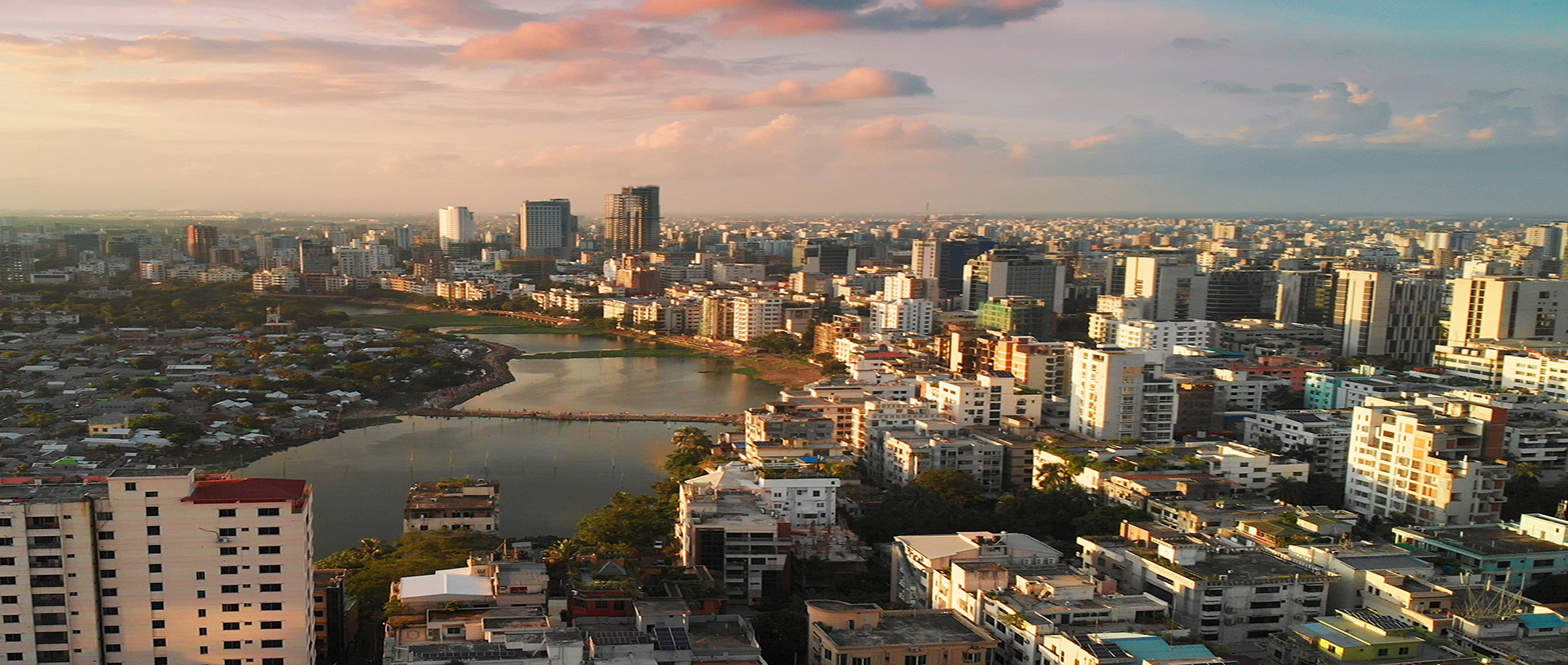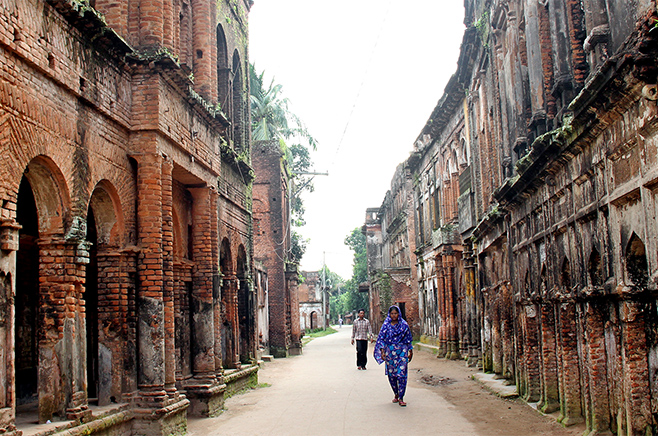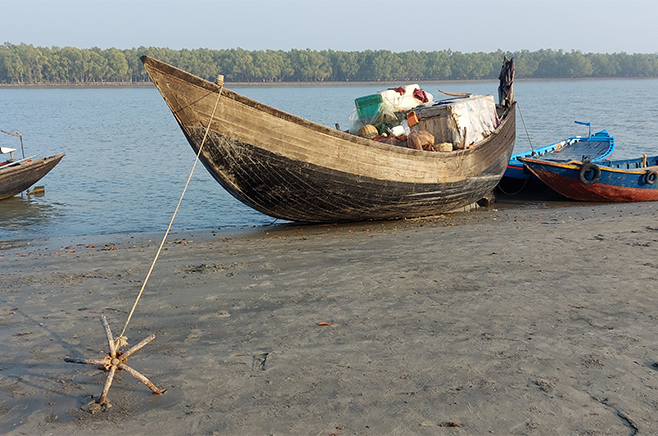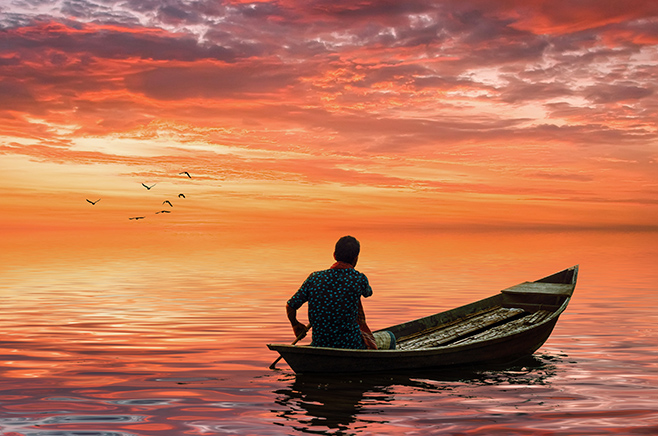
Stop Over in Dhaka
- Home /
- Bangladesh /
- Natural Excursions /
- Stop Over in Dhaka
Dhaka –a place from yesteryears was not unfolded by historians, until the Mughals uncovered as the Capital, then the journey starts. Today it is the modern capital of Bangladesh, with millions surviving. It carries legacy of pre-Mughal to Mughal, British to present time with old and modern structure mingling together, all are charming with the colorful rickshaws and the old part of the city on the bank of river Buriganga, in the words of many, this is a charming living museum. All awaits to unfold and give you a charm of it….walk the narrow streets….take a rickshaw ride….even a horse cart ride….all so colorful and the smiling masses. Due to heavy traffic, we suggest arrive Dhaka on Thursday evening or Friday morning, so you can get less traffic in the city and do sightseeing nicely.
Itinerary In Detail
-
1: Arrive Dhaka
The guide will welcome you at the outside gate of arrival terminal-2 (left side corner) of Hazrat Shahjalal International Airport, Dhaka and then transfer to your designated hotel. Depending on time, he may offer you to visit following places: Bangabandhu Memorial Museum, also known as Bangabandhu House, was the residence of Sheikh Mujibur Rahman alias Bangabandhu, the Father of the Nation and former President of Bangladesh. In the early morning of 15 th August 1975, he was assassinated with most of the family members by some disgruntled army officers at this house. The house witnessed many important events in the political history of Pakistan and Bangladesh. On 14 August 1994, the house has inaugurated as a museum (closes on Wednesday) keeps the original structure as it was. Seven Domed Mosque is a fine example of the provincial Mughal style of architecture of 17 th century, probably erected by Mughal Governor Shaista Khan. The mosque's most notable features are its seven bulbous domes crowning the roof and covering the main prayer hall. The National Parliament Complex (outside view) is the master piece of world famous Architect Louis I. Kahn, comprising 200 acres area.The architect’s key design philosophy was to represent Bangladeshi culture and heritage, while at the same time optimizing the use of
space. The assembly building received the Aga Khan Award for Architecture in 1989.
Stay overnight in Dhaka. -
2: City Tour
Have breakfast and start from the hotel around 0800-0830 hrs. Today we will explore old part of the city and visit the following sites: Curzon Hall meant to be a town hall, was named after Lord Curzon –a Viceroy of India (1899-1905) who laid its foundation stone in 1904. A year later Bengal was partitioned and Dhaka became the capital of the newly created province of East Bengal and Assam. After the establishment of Dhaka University in 1921 it become part of the university’s science section and continues as such. Central Shahid Minar –the symbol of sacrifice for mother language. On 21 st February 1952 many students and political activists who were demanding official status for the native tongue “Bengali” were killed by the Pakistani police force. After a long struggle, the language gained official status in Pakistan (with Urdu) in 1956 and the monument was finally established in 1963. UNESCO declared the day as the International Mother Language Day in 1999 and it has been observed throughout the world since 21 st February 2000. The declaration came up in tribute to the Language Movement done by the Bangladeshis and to promote the preservation and protection of all languages used by peoples of the world.
Dhakeswari Temple, built by King Ballal Sen in 12 th century, is the state temple of Bangladesh for Hindu Community. Some people believe the city named “Dhaka” after the temple. The Mughal Fort, also known as Aurangabad Fort, is an incomplete but beautiful fort of 17 th century. The construction was started in 1678 AD by Mughal Subahdar Muhammad Azam Shah who was son of Emperor Aurangzeb and later emperor himself. His successor, Shaista Khan, did not continue the work, though he stayed in Dhaka up to 1688. Shaista Khan’s daughter known as Pari Bibi died here and he started to think the fort as unlucky, and left the structure incomplete. [Close on Sunday full and Monday 1 st half.]The Star Mosque known as Tara Masjid was built in the first half of the 19 th century by Mirza Golam Pir at Armanitola. The mosque is decorated with Japanese and English china clay tiles and used both methods of the Chinitikri application and outside with motifs of blue stars Armenian Church is a historically significant architectural monument was built in 1781. The church bears testimony to the existence of a significant Armenian community in the region in 17-18 th centuries. Mother Teresa stayed in the church compound during 1996 when she was visited Dhaka. Take a rickshaw ride and enjoy the trip through the narrow streets of Old Dhaka till the Sadarghat, the busiest river port located on the river Buriganga, is one of the most dynamic places in Dhaka and also one of the largest river ports in the world. Once about 300 large and small motorized passenger water vessels were departing and arriving with an average 150,000 people in this terminal every day. Currently this port uses less because of newly constructed Padma Bridge which makes the communication easier. Take a country boat for a cruise on the Buriganga River to get the vive of the crowded port. You can also visit a small ship repairing yard other side of the river. Round the year many small and large water vessel dock here for maintenance.
After a short boat trip, visit Beauty Boarding, the double-storied yellow building, was a boarding house and a historical center of the intellectual gathering of Bengali authors, poets, cultural activists, and politicians. But with the passage of time, Beauty Boarding began to lose its sparkle as Dhaka developed into a city adorned by plush neighborhoods and modern amenities. Currently, the place is popular for serving Bengali food, and they also serve Indian food but still in old style they use stainless steel dishes. The most beautiful Ahsan Manzil, also known as “Pink Palace” was the resident palace of Dhaka’s Jamindars, constructed in between 1859 –1872. After acquisition of Jamindari in 1952, they couldn’t maintain the expenses of the palace and left Bangladesh to Europe for better livelihood after our liberation war, and then the property occupied by illegal people. In 1985, Bangladesh Government acquired the palace and surrounding area, and has been designated as a national museum in 1992. [Close on Thursday full & Friday 1 st half.] Walk through the Old Hindu Streets and taste the color, smell, sound and activities of the old town. This is one of the oldest areas of Dhaka, stretches along a narrow lane, lined with richly decorated brick buildings built during the late Mughal or Colonial period. You will find people making ornaments by shell and you can also enjoy live cooking which is very famous as Old Dhaka’s Street Food.
Stay Overnight in Dhaka. -
3: Depart Dhaka
After breakfast, transfer to airport for your onward destination.
3 Days From

Any Question?
Feel free to call our travel experts.
+977 9851189018, +977 9801089018
info@asiaticroads.com
3 Days From

Any Question?
Feel free to call our travel experts.
+977 9851189018, +977 9801089018
info@asiaticroads.com
3 Days From

Any Question?
Feel free to call our travel experts.
+977 9851189018, +977 9801089018
info@asiaticroads.com
Reviews
In my 2 week stay, John was very professional and took me around to experience all that Kathmandu and surrounding areas has to offer. Sites were seen and many locals were met through John’s network.

Steven Stone
TravellerIn my 2 week stay, John was very professional and took me around to experience all that Kathmandu and surrounding areas has to offer. Sites were seen and many locals were met through John’s network.

Steven Stone
Traveller3 Days From







